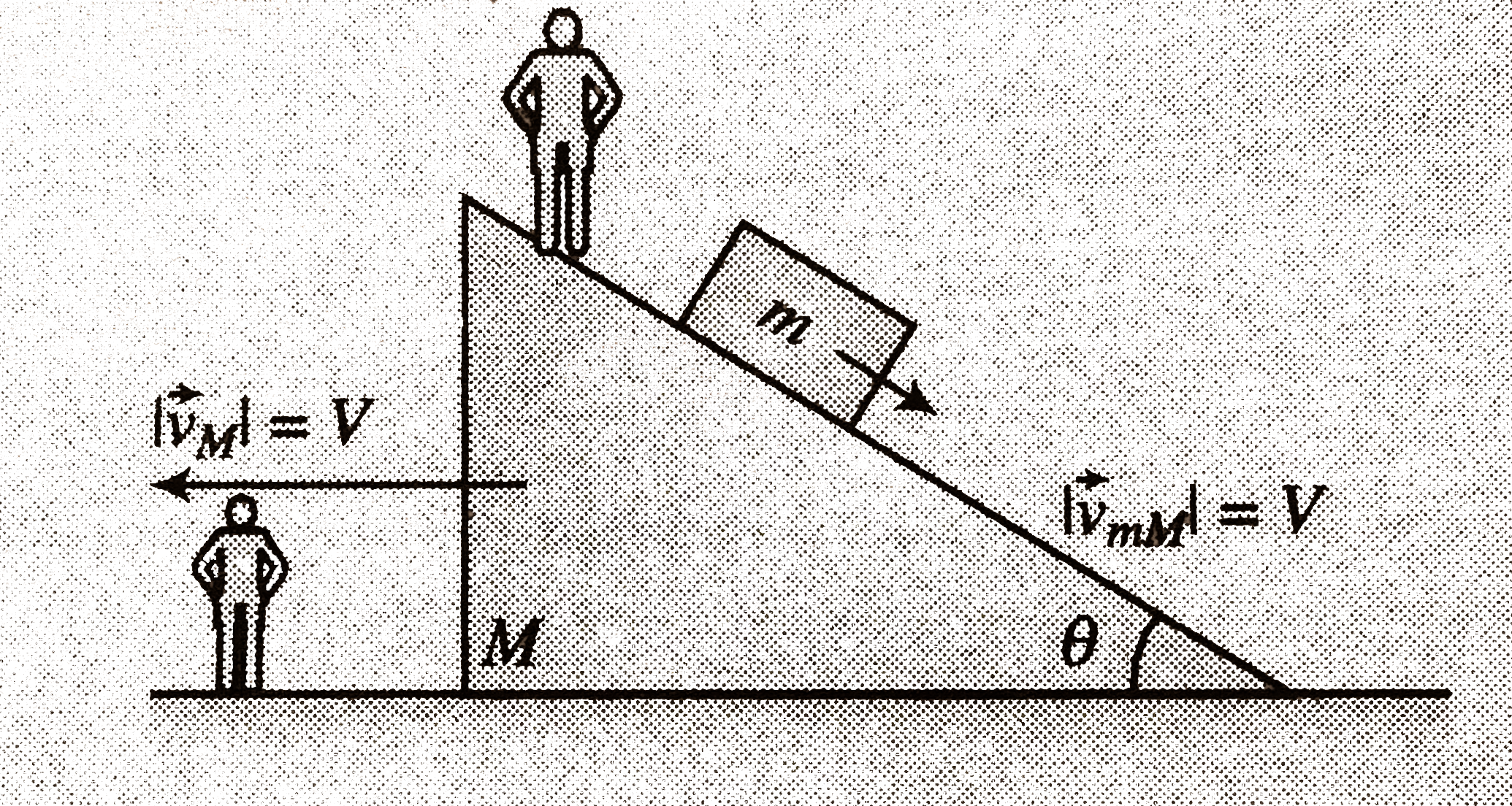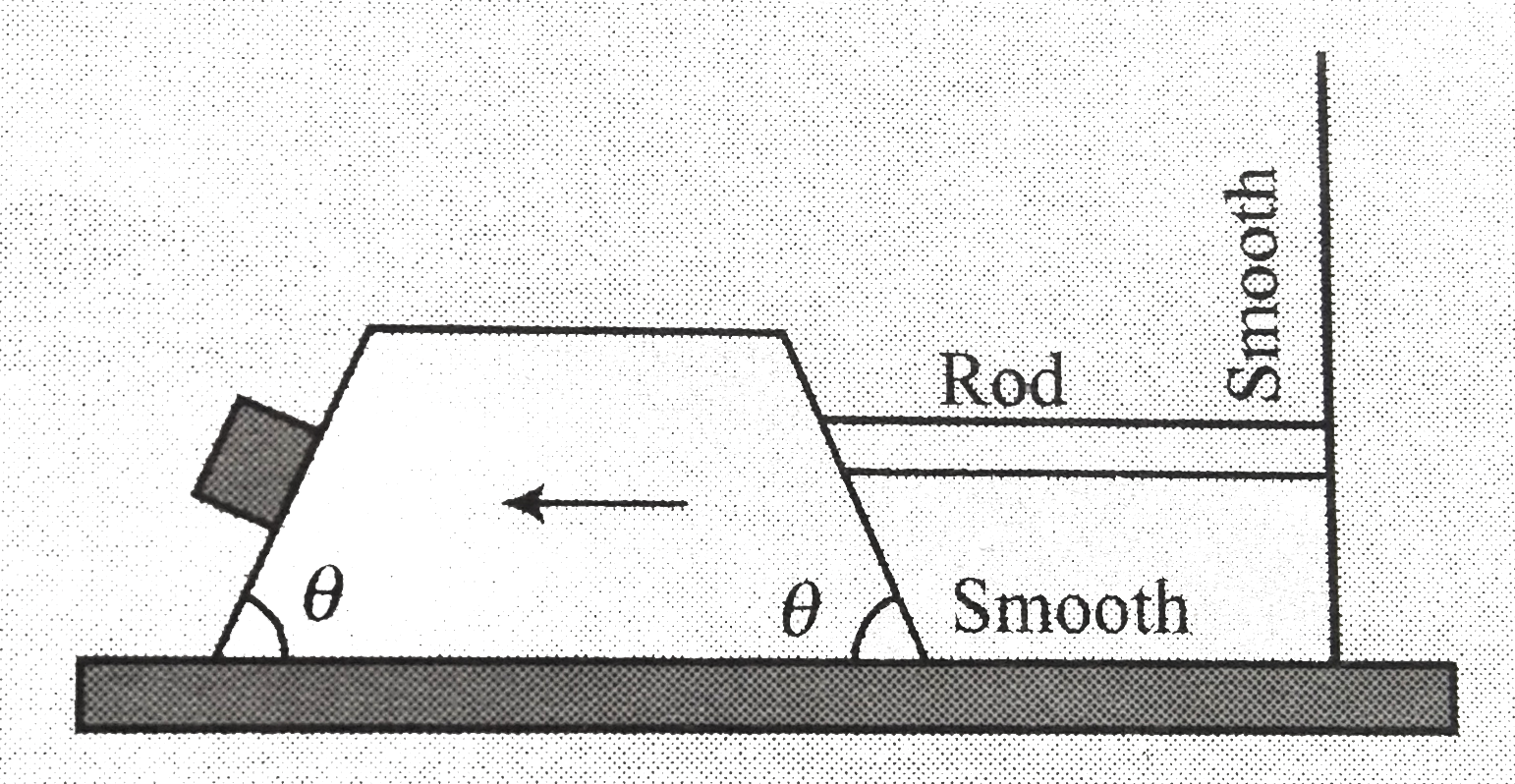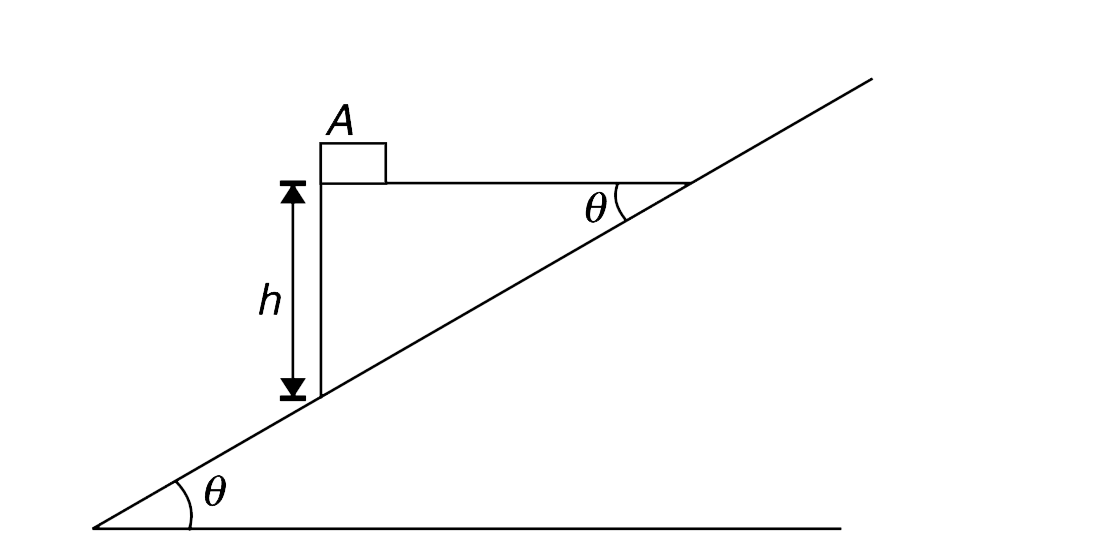A block slips along an incline of a wedge. Due to the reaction of the block on the wedge, it slips backwards. An observer on the wedge will se the block moving straight down the incline. Discuss how to find the absolute velocity of the block.
 .
.
We know that →vm/M=→vm−→vM⇒→vm=→vm/M+→vM
Note that a single subscript implies absolute velocity. The absolute velocity of block is the vector sum of its velocity relative to the wedge and velocity of wedge relative to ground.
The absolute velocity of block (ground reference frame) is shown in the vector diagram given in (Fig. 5.80).
|→vm|=√v2+V2+2vVcos(π−θ)
=√v2+V2−2vVcosθ
We can derive this result by resolving v into its components.
Sum of x - components Vx=vcosθ−V
Sum of y - components Vy=vsinθ
Resultant velocity =√V2x+V2y
=√(vcosθ−V)2+(vsinθ)2)
=√v2+V2−2vVcosθ
tan∝=VyVx=vsinθvcosθ−V.
 ,
, .
.
Topper's Solved these Questions
- BOOK - CENGAGE PHYSICSCHAPTER - KINEMATICS-2EXERCISE - Solved Examples7videos
KINEMATICS-2
- BOOK - CENGAGE PHYSICSCHAPTER - KINEMATICS-2EXERCISE - Exercise 5.115videos
KINEMATICS-2
- BOOK - CENGAGE PHYSICSCHAPTER - KINEMATICS-1EXERCISE - Integer9videos
KINEMATICS-1
- BOOK - CENGAGE PHYSICSCHAPTER - KINETIC THEORY OF GASESEXERCISE - Compression2videos
KINETIC THEORY OF GASES
Similar Questions
question based on block over wedge constrained
View SolutionIn fig, no relative motion takes place between the wedge and the block placed on it. The rod slides down wards over the wedge and pushes the wedge to move in horizontal direction, The mass of wedge is same as that of the block and is equal to M. If tanθ=(1/√3), find the mass of rod. (Neglect rotation of the rod).
 View Solution
View Solution
Knowledge Check
- Question 1 - Select One
The minimum value of acceleration of wedge for which the block start sliding on the wedge, is:
Ag(cosθ+μsinθsinθ−μcosθ)Bg(sinθ+μcosθcosθ−μsinθ)Cg(sinθ−μcosθsinθ+μcosθ)Dg(cosθ−μsinθsinθ+μcosθ) - Question 2 - Select One
a Block of mass m is placed on a wedge of mass M there is no friction between the block and the wedge .The minmum coefficient of friction between the wedge and the gound so that wedge does not move is,
 Amcos2θM+mcos2θBmsin2θM+mcos2θCmcosθsinθM+mcos2θDmcosθsinθM+msin2θ
Amcos2θM+mcos2θBmsin2θM+mcos2θCmcosθsinθM+mcos2θDmcosθsinθM+msin2θ - Question 3 - Select One
A block of mass m is placed on a smooth wedge of inclination θ & mass M. The whole system is slip on the wedge. Then the normal reaction on the wedge acting from the ground :
A(M+m)gB(M+msinθ)gCMgD(M+msinθM+m)gcosθ
A wedge of mass m is kept on a smooth table and its inclined surface is also smooth. A small block of mass m is projected from the bottom along the incline surface with velocity u. Assume that the block remains on the incline and take θ=45∘,g=10m/s2.
(a) Find the acceleration of the wedge and the x and y components of acceleration of the block.
(b) Draw the approximate path of the block as observed by an observer on the ground. At what angle does the block hit the table?
(c) Calculate the radius of curvature of the path of the block when it is at the highest point.
 View Solution
View SolutionA block of mass m is placed at the bottom of a massless smooth wedge which if placed on a horizontal surface. When we push the wedge with a constant force, the block moves up the wedge. Find the work done by the external agent when the block has a speed v and is reaches the top of the wedge.
 View Solution
View SolutionA block of mass m is placed on a smooth wedge of inclination. The whole system is accelerated horizontally so that block does not slip on the wedge Find the i) Acceleration of the wedge Force to be applied on the wedge Force exerted by the wedge on the block .
View SolutionA wedge is placed on the smooth surface of a fixed incline having inclination θ with the horizontal. The vertical wall of the wedge has height h and there is a small block A on the edge of the horizontal surface of the wedge. Mass of the wedge and the small block are M and m respectively.
(a) Find the acceleration of the wedge if friction between block A and the wedge is large enough to prevent slipping between the two.
(b) Find friction force between the block and the wedge in the above case. Also find the normal force between the two.
(c) Assuming there is no friction between the block and the wedge, calculate the time in which the block will hit the incline.
 View Solution
View SolutionA block of mass m is kept on an inclined plane of mass 2m and inclination α to horizontal. If the whole system is accelerated such that the block does not slip on the wedge then :
View Solution

